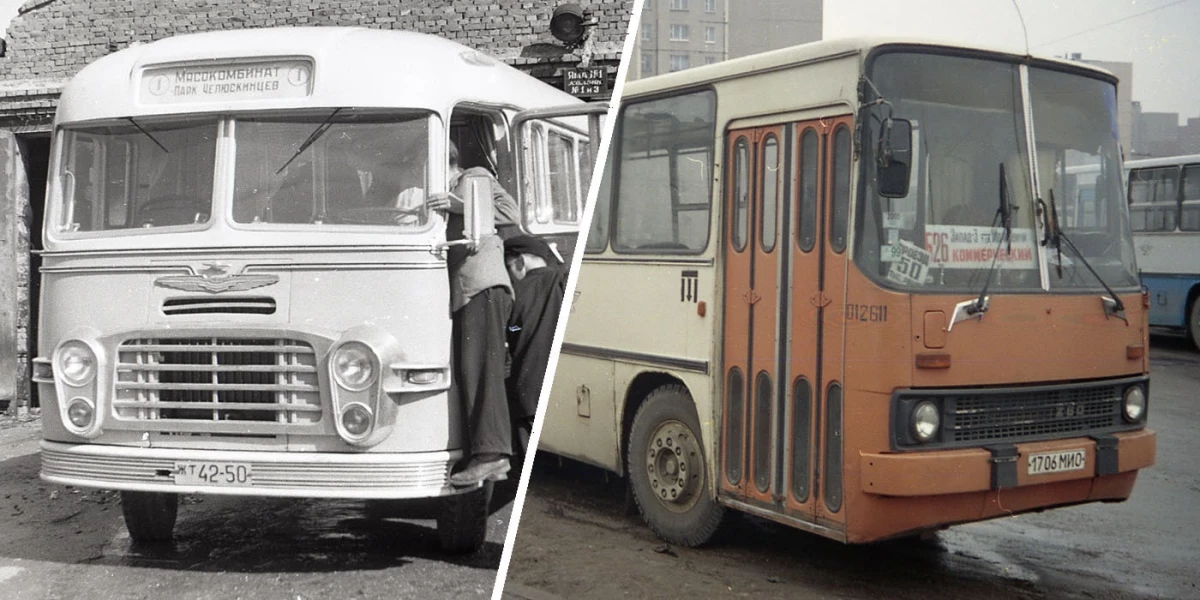
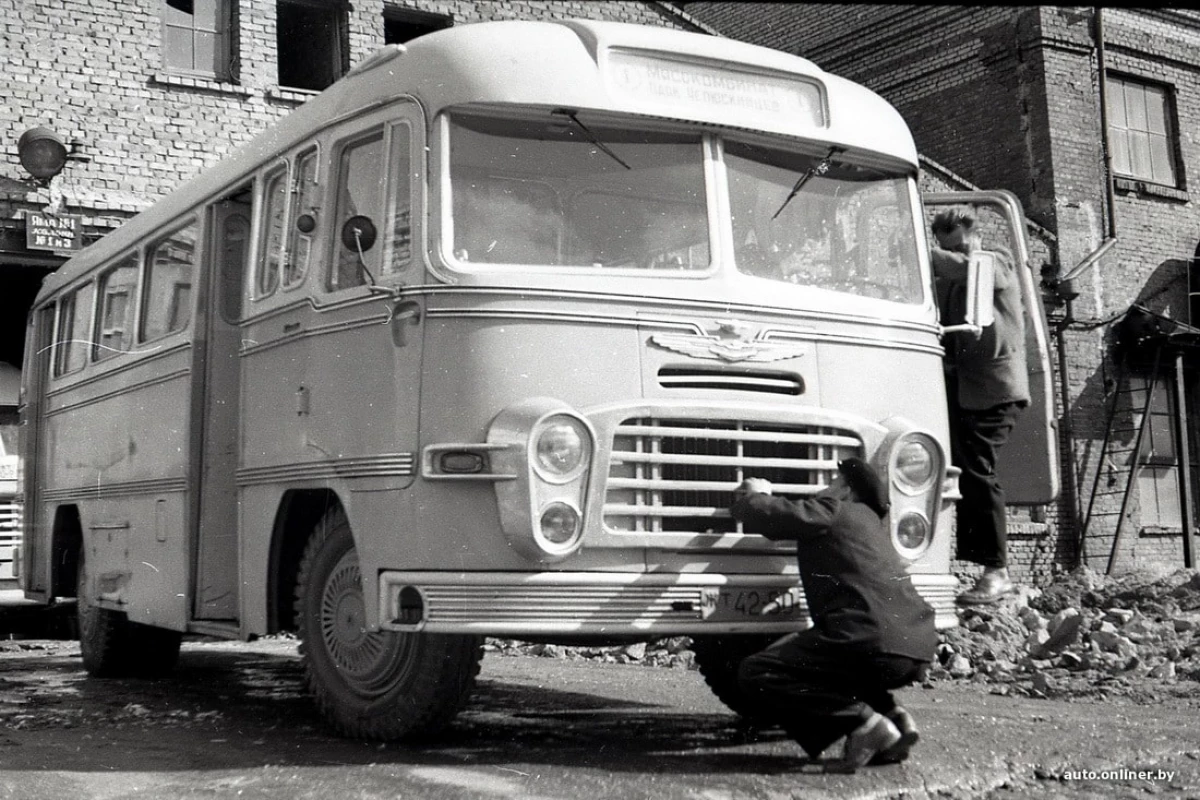
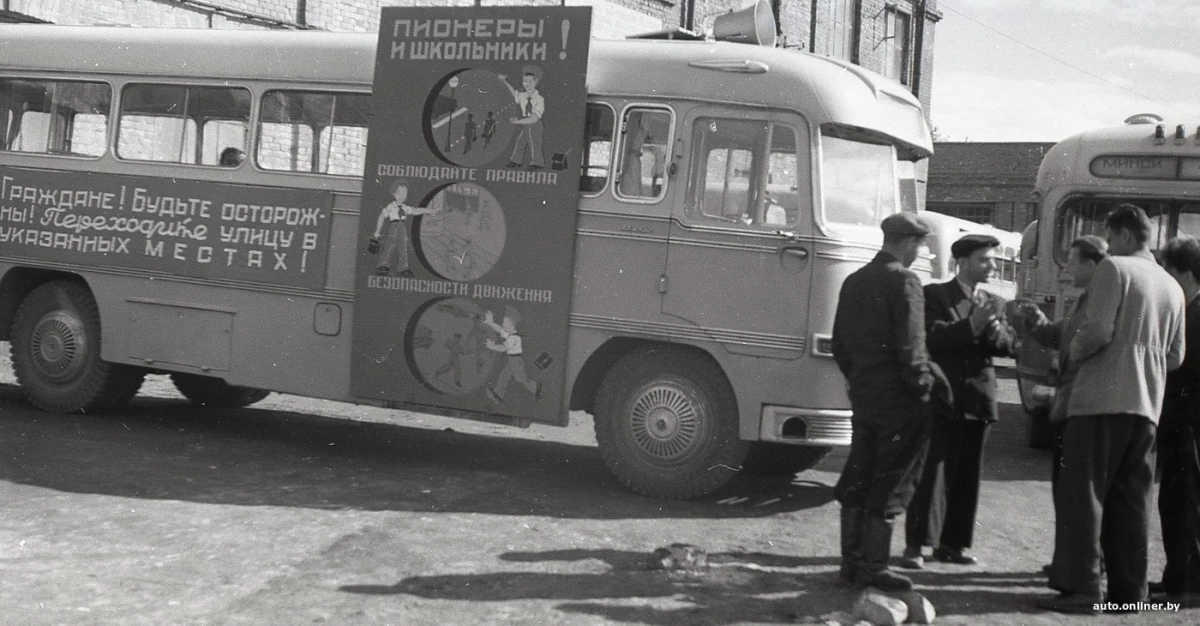
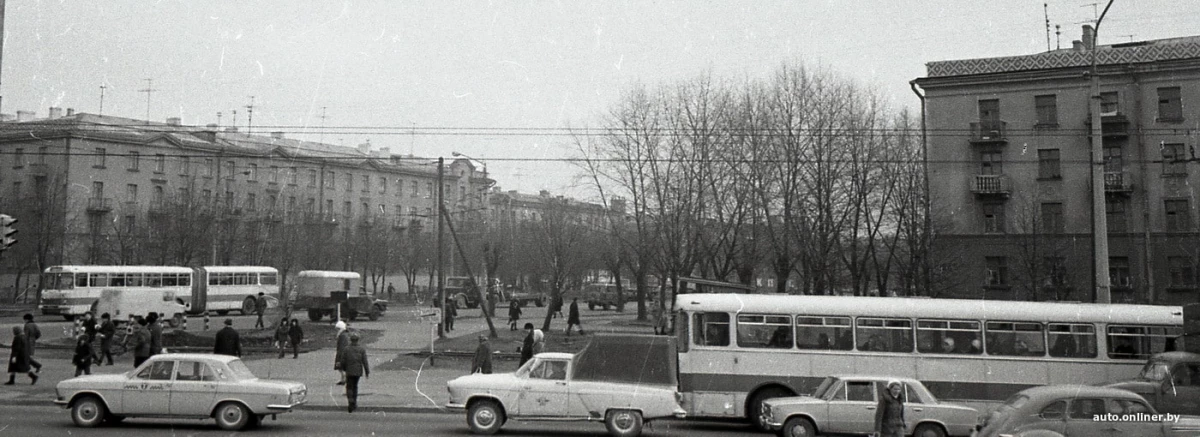
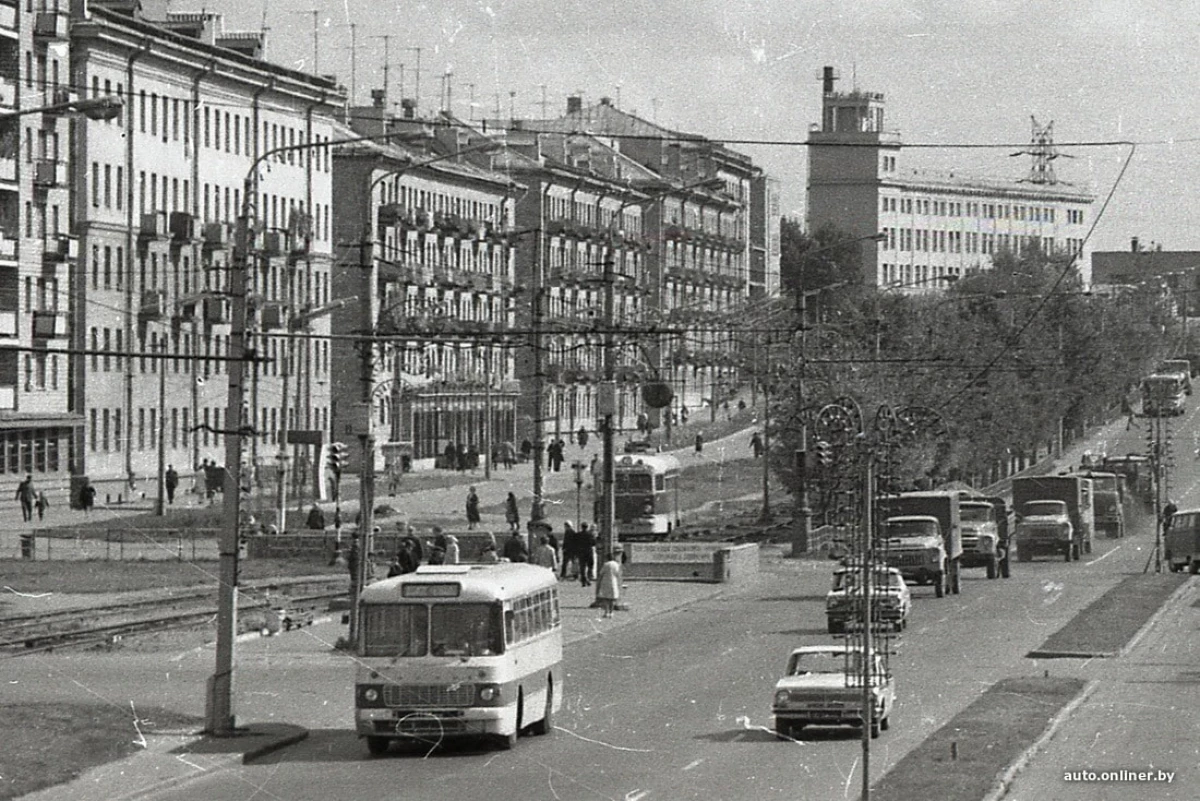
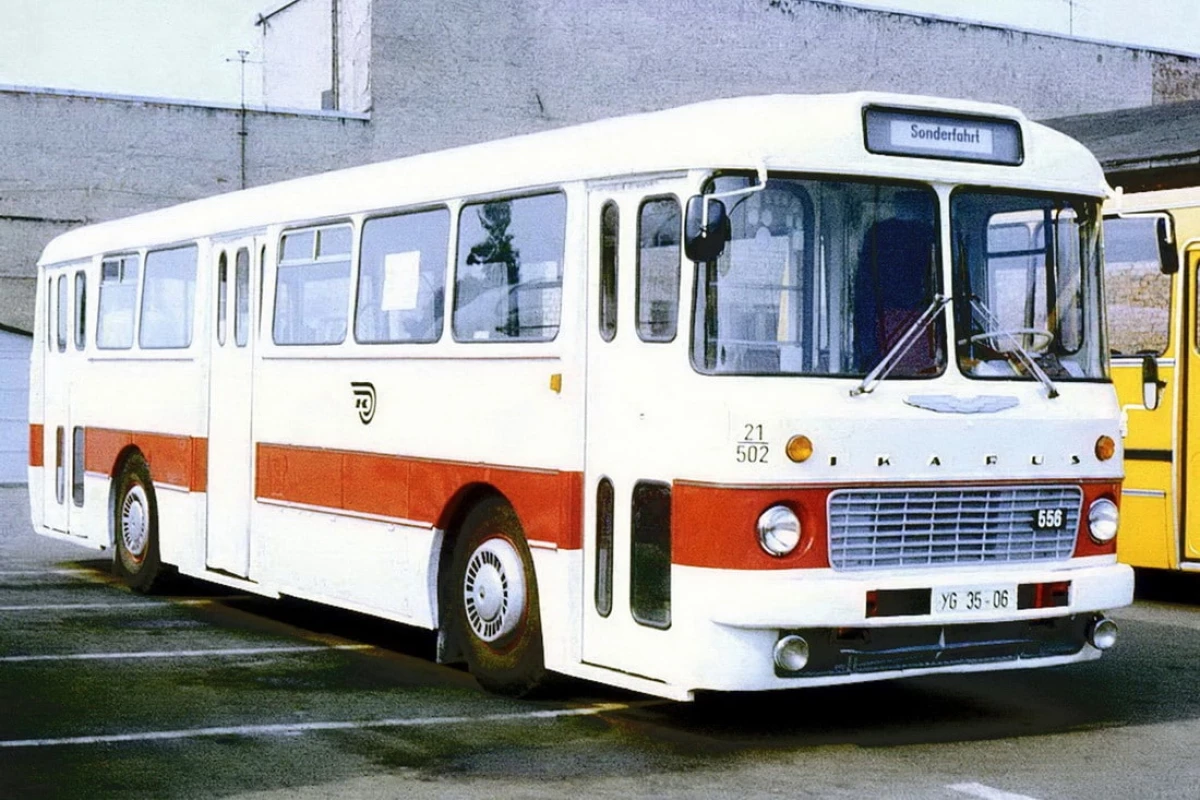
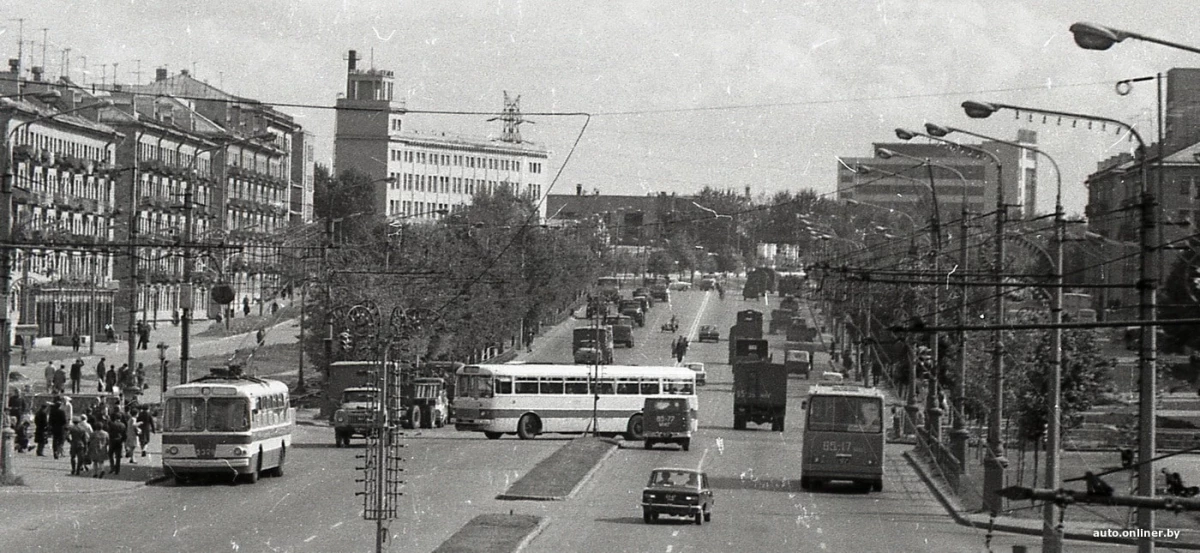
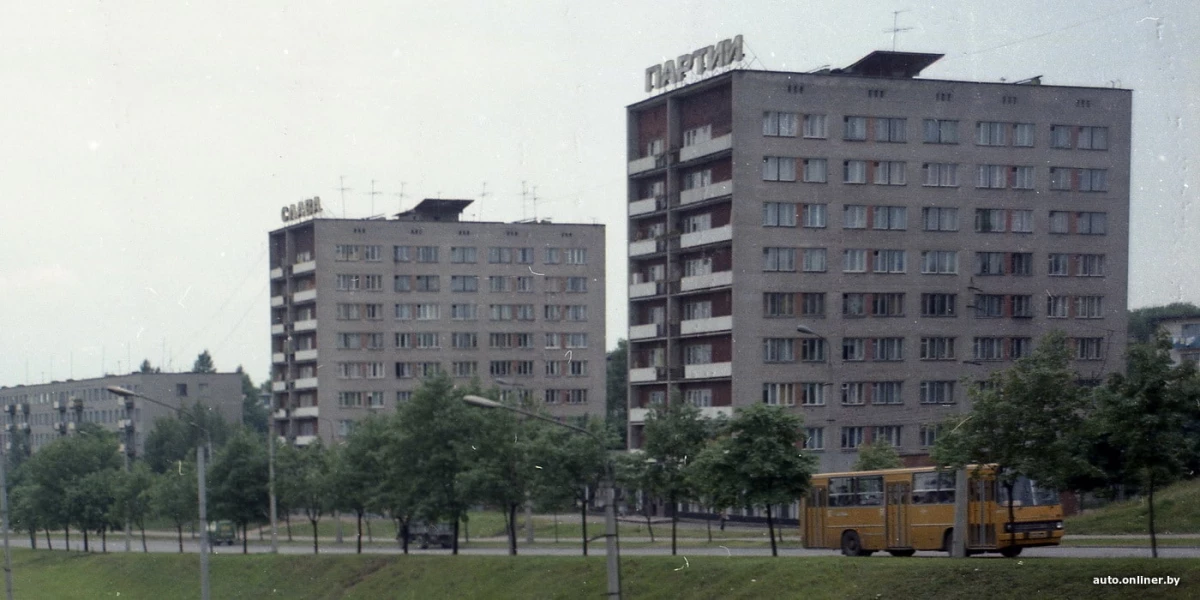

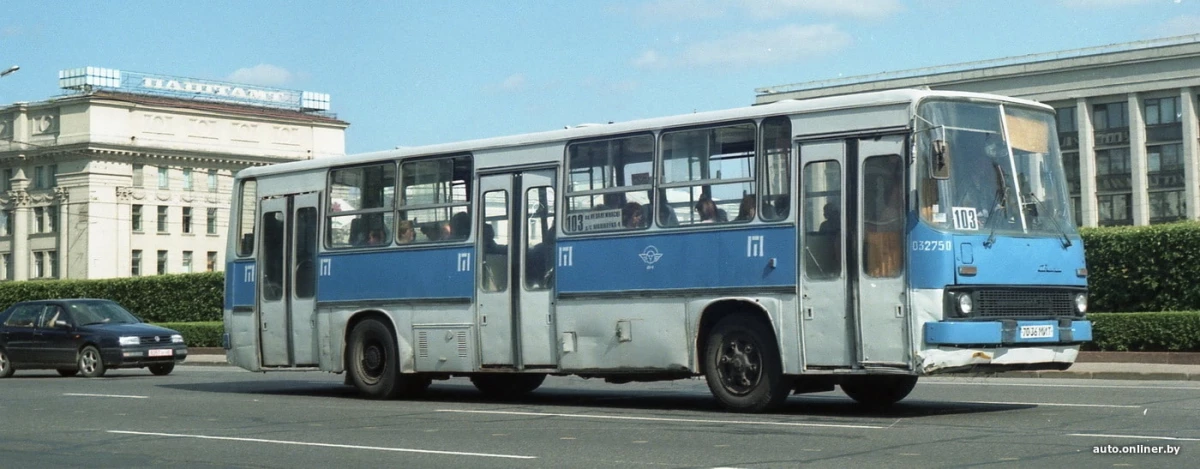
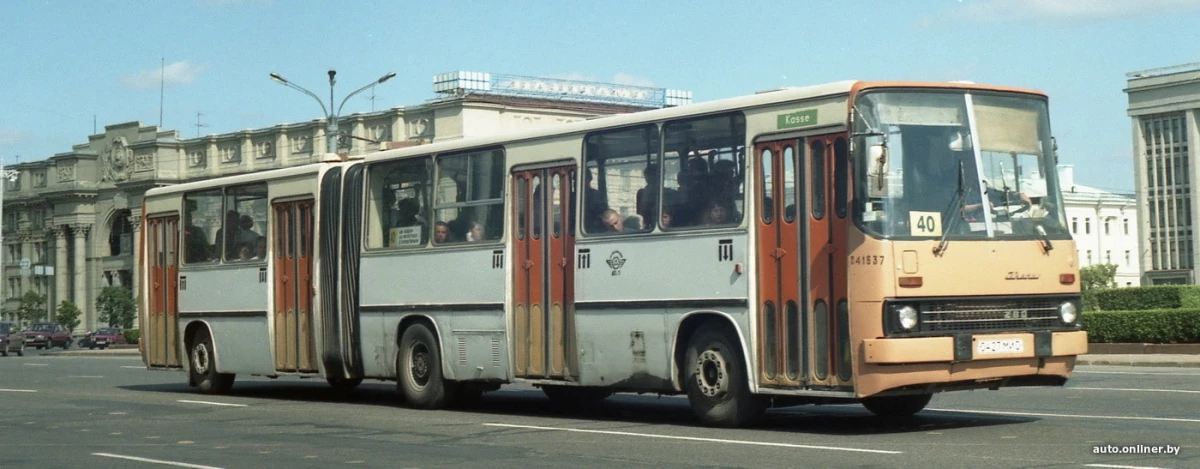
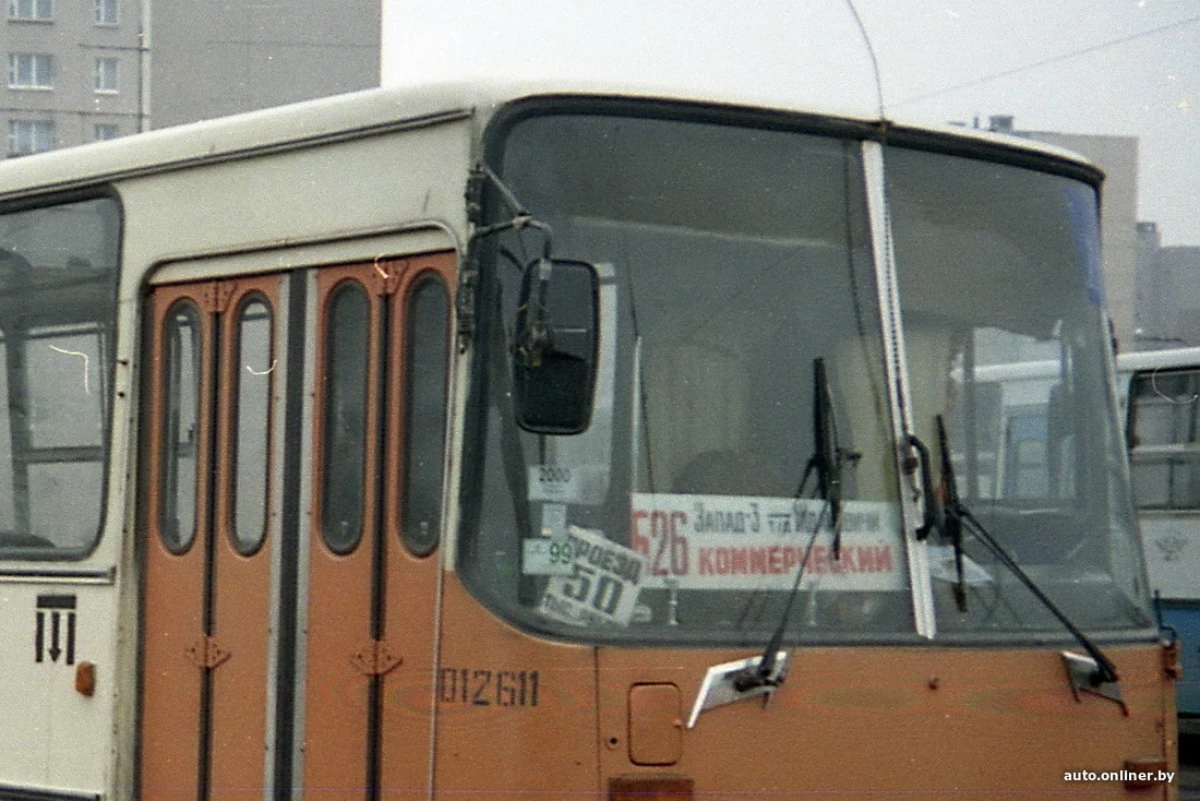
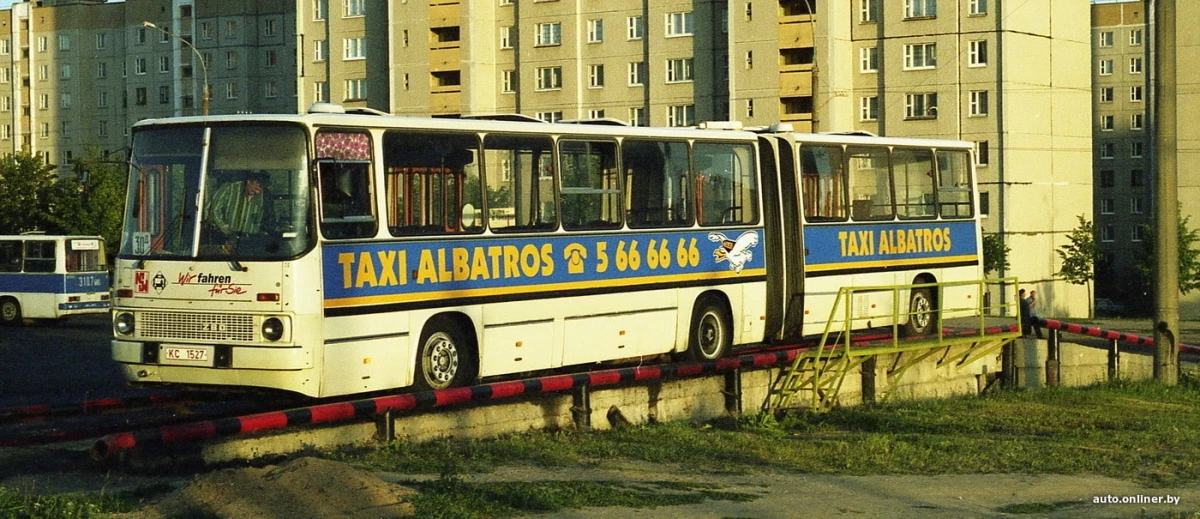
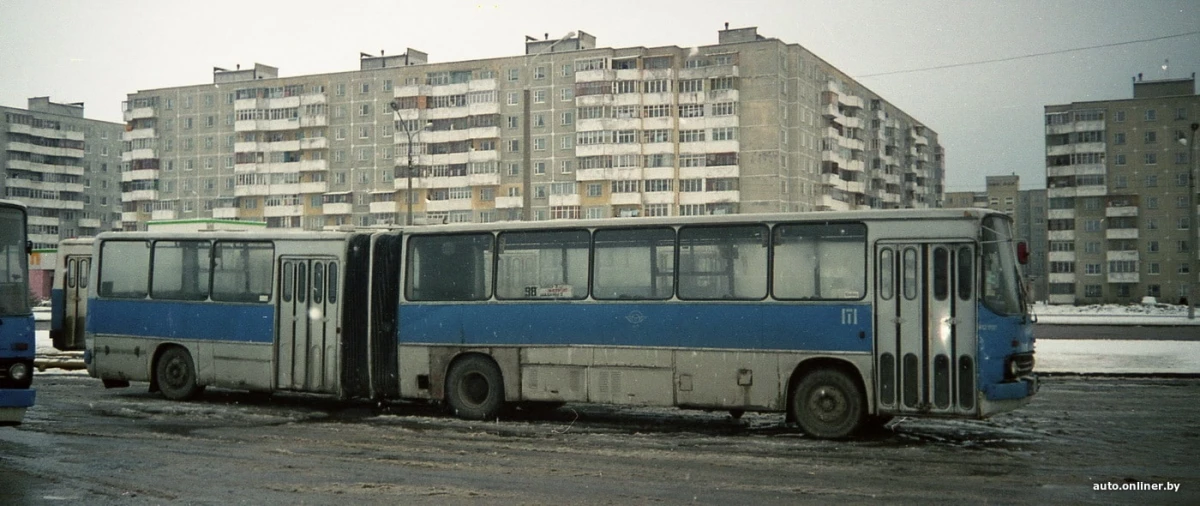
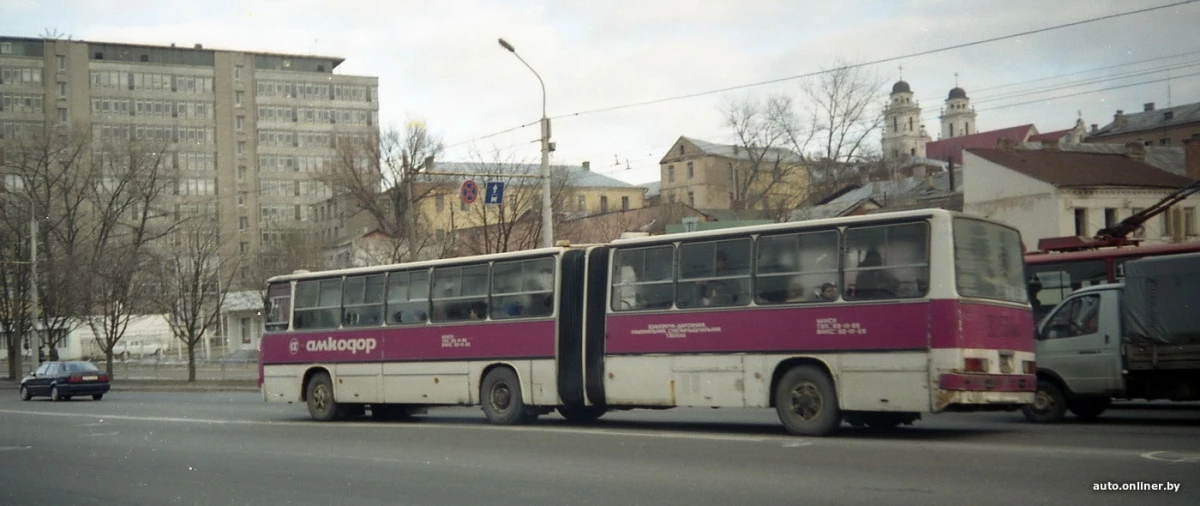
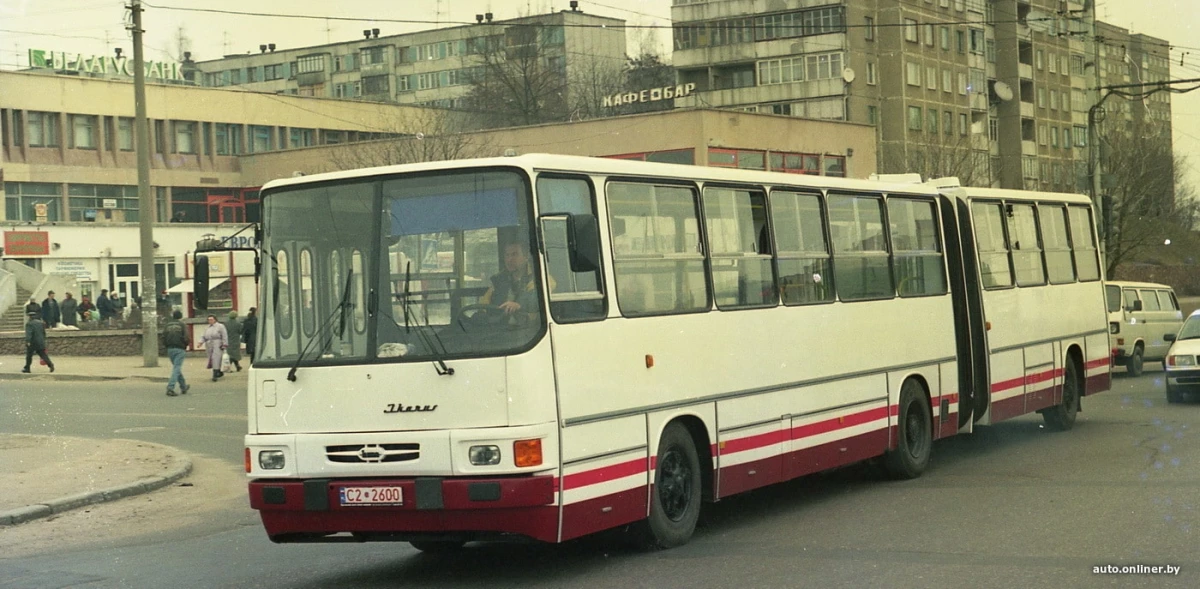
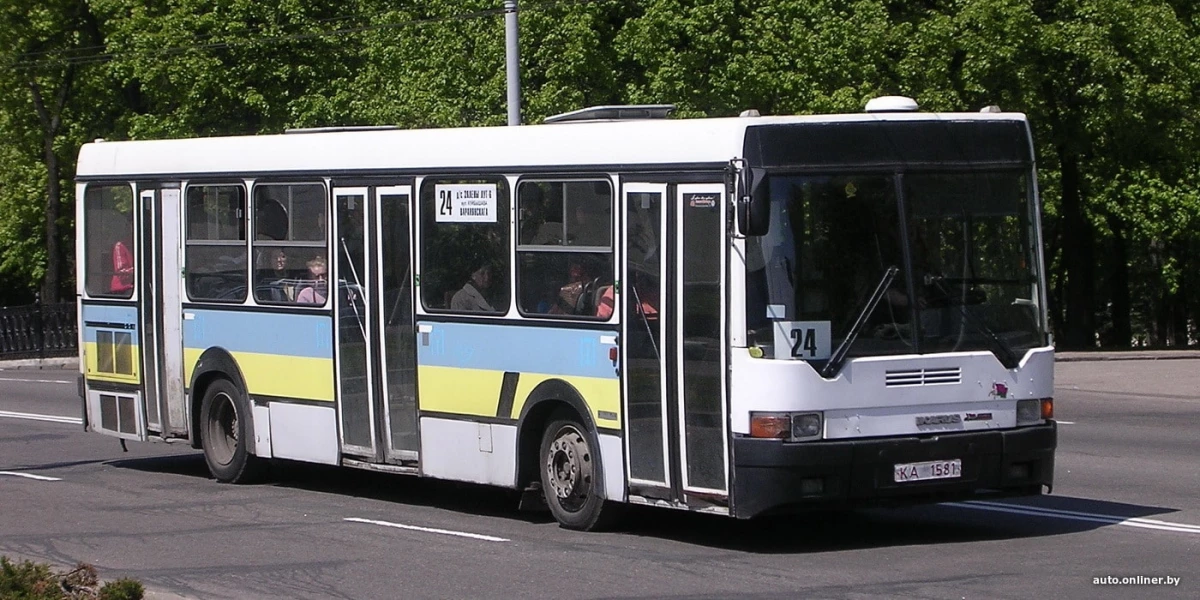
It seemed that they would always. But nothing is forever. One and a half decades have passed since the Hungarian buses of Ikarus have become massively disappearing from Minsk urban routes. They gone, but we remember them. About the history of Ikarusov in Minsk - our story.
On encyclopedic comprehensiveness do not pretend. It is rather emotions from youth and a slight blewing of dust from the archives. But the main models in our review entered accurately.
Soviet period
In the second half of the 1950s, Hungarian buses were already in Minsk. For example, on this photo is captured by Ikarus 31 of the route No. 1 "Meat processing - Park Chelyuskintsev". This model in the urban and long-distance versions of the plant in Sexfeherevar began to produce in 1956. The photo is made in the Belarusian capital in 1958. And this means that Minsk received a fresh model at that time quite quickly. This urban modification of the bus with two "accordion" doors was called Ikarus 31.22.
How many such cars were in Minsk, now it is difficult to say. But definitely more than one. In the photo - another copy, which in the bus park is prepared for agitation events. The slogans on posters in six decades did not lose their relevance.
But the real era of buses of the Hungarian brand began in Minsk, according to one data, in 1967, in others - in 1968. Then the elegant and unprecedennially spacious at the time of the "harmonica" Ikarus 180 were released on the metropolitan streets. The deliveries of this model in the Soviet Union began, and Minsk received them one of the first. According to the memoirs of passengers, the rear parts of the "accordion" chatted simply incredibly, much stronger than in the current buses. But children, for example, it was only joy - they gladly jumped on Ughab together with Ikarus.
Photo from the early 1970s. Crossroads of Kabushkin and partisan avenue, left house 105, on the right - 104. In the lower left corner of the frame there is a long time to eliminate the railway movement of the former branch on MAZ from the Stephenanka station. Here in the frame along with Ikarus 180 and single Ikarus 556 from the same family.
Such three-door Icaruses appeared in Minsk in about 1971-72. It is curious that in Hungary, this option began to produce four years earlier than the "accordion", in 1962, but in the capital of the BSSR, the base "single" came after "harmonichek".
One of these buses hit the photo taken in the 1970s from the bridge over the partisan avenue. Yes, you did not seem - then trams went along the partisan.
The color of the Minsk Ikarus models 556 and 180 was white-red-white. It should be noted that it was an absolutely standard factory color of those years. Almost all buses Ikarus 556 and 180 in all of the USSR, as well as in all other Sottars, were white-red and white.
And this is already the second half of the 1970s. The same bridge over the partisan avenue, and in the frame of single Ikarus two generations. A new model - Ikarus 260 began to arrive at ikarus 556, which became an absolute classic and retaining its presence on the Minsk streets until the beginning of the XXI century.
Single Ikarus 260 and articulated Ikarus 280 will be a symbol of a city bus movement All 1980s and, perhaps, the entire 1990s.
That's how it started. Residents of the "Column" on Vaneyev Street still live under the "party" and "glory", and the Ikarus of the new generation already converted along the capital. The color of urban machines throughout the Soviet period was strictly yellow.
After the collapse of the USSR, the color of Minsk Icaruses will change.
Lichy 1990s and Millennium
In the earliest 1990s, yellow Icaruses were still dominated on the lines, but then they began massively repaint.
Here is an example. Ikarus 260 More Soviet era, released in 1986. Photographed in 1999. The bus is no longer yellow, but in the ranks, although it is already worn out. On the West-3 dispatch station, he drove to the overpass for the inspection duty officer. The red boron microdistrict in the background is still built. Spikes this instance in 2006. Route №11 still exists, though since then several times changed its scheme.
We managed to get to Minsk and the elongated "single" Ikarus 263.10. They were a modification of Ikarus 260 with elongated two short window sections by the body, slightly "stretched" base and double-handed doors. These cars began to be produced in the second half of the 1980s and at first they were supplied only to the German market, a little later - to Hungarian, and came to the Soviet Union in 1989. This Minsk instance is the 1990 release and, probably, one of the last to the Belarusian capital is new, from the conveyor. The last Minskik Ikarus 263.10 worked until the first Numbers of July 2007.
The plant in Matiasfeld "Harmoshka" IKARUS 280 was done until 2001, and a single model Ikarus 260 - until 2002. However, Minsk after the collapse of the USSR, new Icaruses no longer bought (expected expensive), but their service was debugged. The bus masses only became on his feet. The need was, and the park was updated due to the procurement of used Ikarus buses. They acquired them mainly in Germany.
The first "Germans" began to appear in Belarus approximately in 1992-1993. The buses in the easily recognizable color of East Berlin came to the Minsk streets. On some even German inscriptions remained. This is a modification of Ikarus 280.02, created in Hungary specifically for the GDR. A characteristic appearance is the absence on most windows.
Ex-Berlin Ikarus 280.02 worked, including on an interesting route No. 526 "Commercial". This route connected DS "West-3" with TD Zhdanovichi. So there is very close next? It is now near and the straight road is, and 20 years ago it did not exist, and it was not easy to get in Zhdanovichi in Zhdanovichi, with several transfers. The commercial route was also driving through Pushkinskaya, but quickly and only with one stop. The passage cost noticeable money - 50,000 rubles.
Purchases of used Icaruses in Germany continued throughout all the nineties. There were also purchases from the Czech Republic and Poland. This copy of Ikarus 280.02 came one of the latter - in 1999 and first worked with the "native" advertising of the German Taxi service Albatros.
There were several cars in an interesting suburban version of Ikarus 280.03 with a door formula 0 + 4 + 0 + 4, also purchased used in Germany. This copy worked on an unusual route No. 98 Express, which connected DS "West-3" with Shabanans. She walked through the whole city, called him "Around the Move". She rarely walked, but if it was possible to sit on him, then from the West to the center it was possible to take a taxi speed. There were two tongs to pierce.
The deficit of rolling stock tried to compensate and at the expense of the local assembly of Ikarusov. The inscription "Amkodor" on board is not an advertisement for Belarusian construction equipment. Ikarus purple color is another important stage in updating the Belarusian Bus Park. This Ikarus 280 was assembled at Amkodor and even had its own designation - "Amkodor-10126". Yes, yes, there was a short period since 1995, when the Minsk enterprise was engaged in the industrial buses. How many collected - unknown, but at least a dozen exactly. And the place where the picture is taken, will learn? This is Nemigi, only without a set of shopping centers in the style of "pseudoetro".
And this frame was made in 2000 at the crossroads of Glebka and Pritutsky streets. The bus is nothing more than Ikarus 280.26. Polish version with its plastic mask. The rooms are also Polish. What did he do in Minsk? I came to visit or worked with us - a mystery.
But the finals of the Epoch of Ikarusov in Minsk looked like this. It is Ikarus 415 new (then) generation, which worked in the Belarusian capital in 1995-2007. The bus was purchased new for experimental exploitation. Then, in 1995, Minsk bought one new "accordion" Ikarus 435. From the point of view of passengers, they were quite good, but it was hard to serve two unique copies in the park. The experiment failed. Other purchases of Ikarus 415 and Ikarus 435 did not follow, continued to deliver "BESUKA".
Icaruses are definitely part of the memories of childhood and youth of many Minsk. There are people who sincerely think that Hungarian buses were better than modern masses. Yes, the floor they had one level, the seats stood exactly, and not on the podiums of different heights, but ... these were high-depth buses with three steep steps at the entrance, and with the handrail in the middle. Go to Ikarus with a carriage it was impossible. For parents with young children, this is a fatal flaw, the benefit of the remaining in the historical past.
Park of city buses in the whole Belarus is now monomarocre, MAZ completely won. In terms of content and maintenance, this is an advantage. But transport fans became boring. There are no single unicorms, beyond which, as in youth, I would like to "run with the fotik" ... But such is reality. The more interesting is to revise old photos.
AUTO.ONLINER in Telegram: Furnishing on the roads and only the most important news
Fast connection with the editors: Read Public Chat Onliner and write to us in Viber!
Reprinting text and photos Onliner without resolving the editors is prohibited. [email protected].
